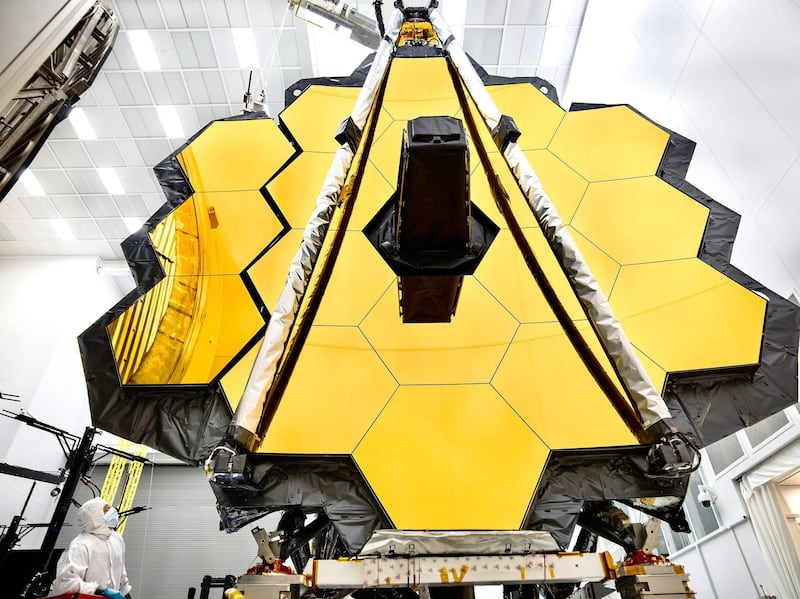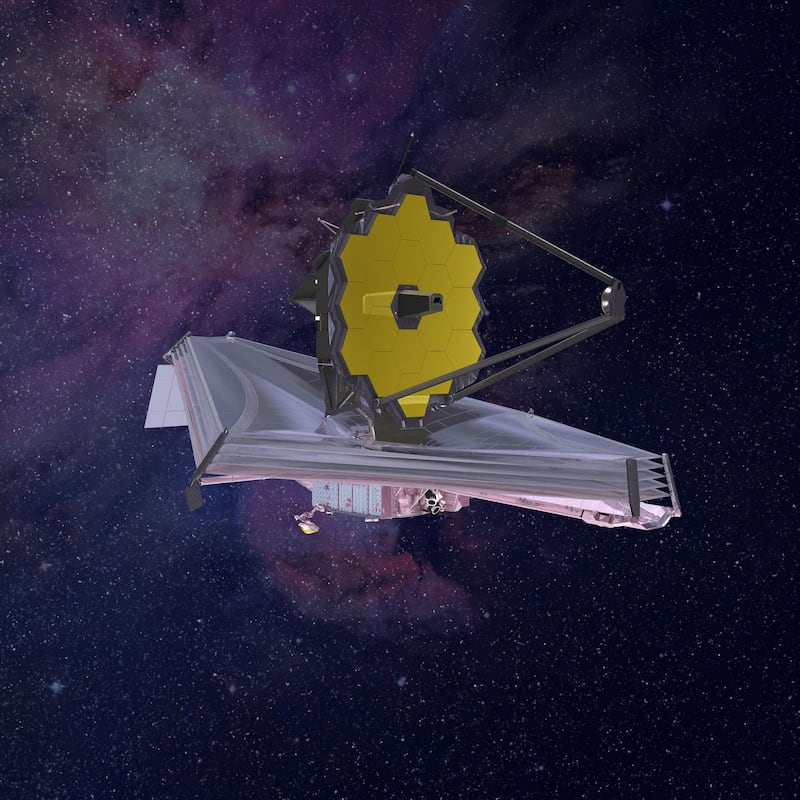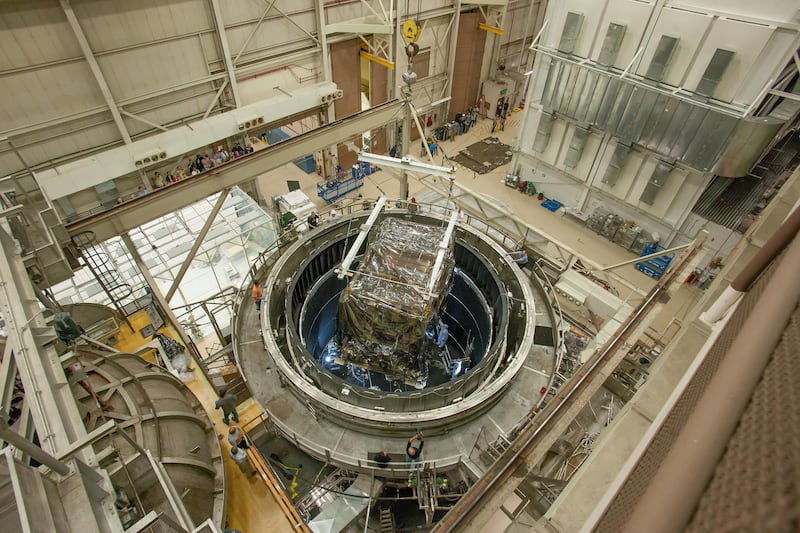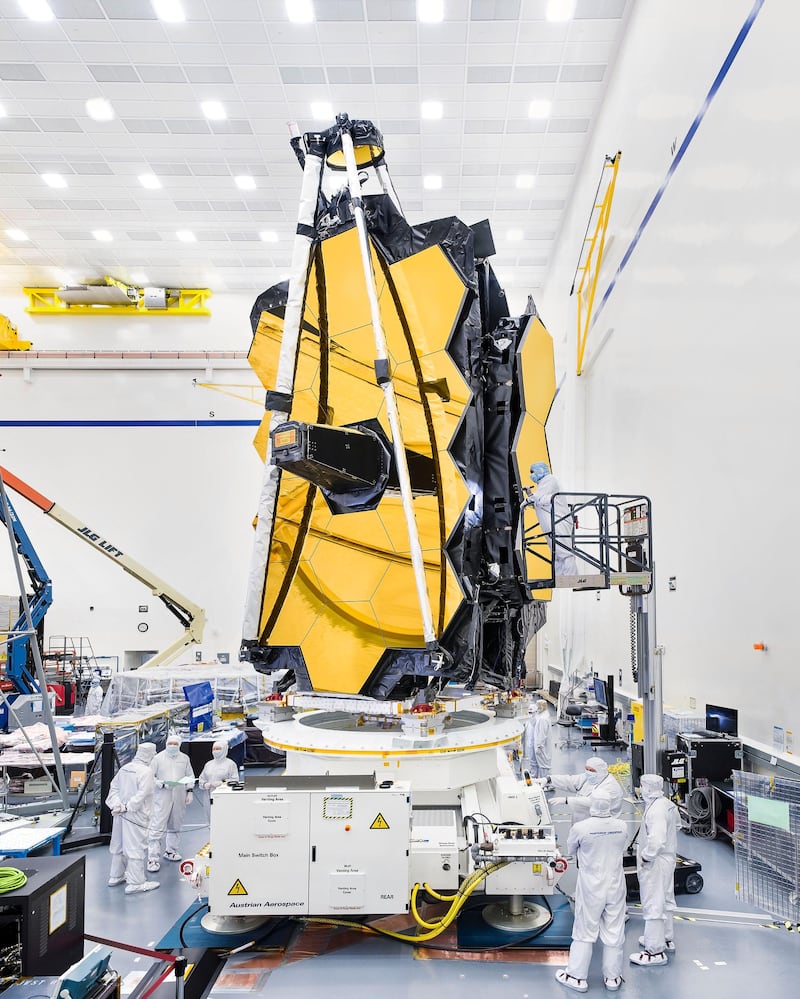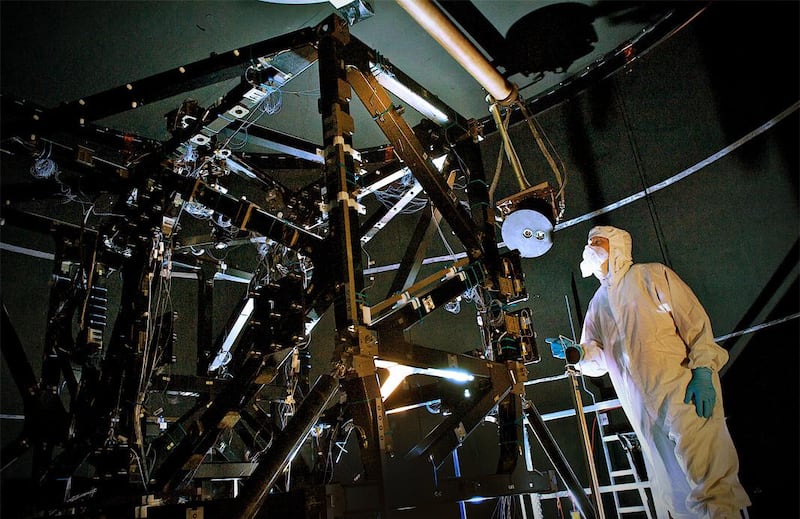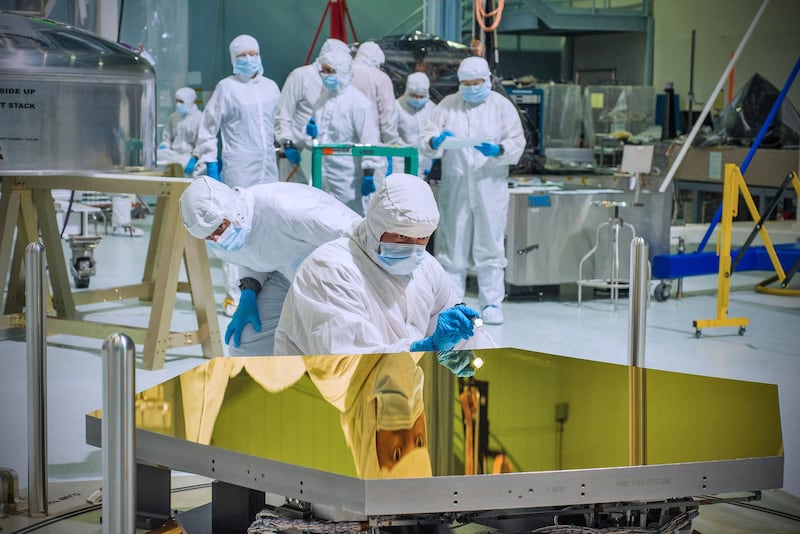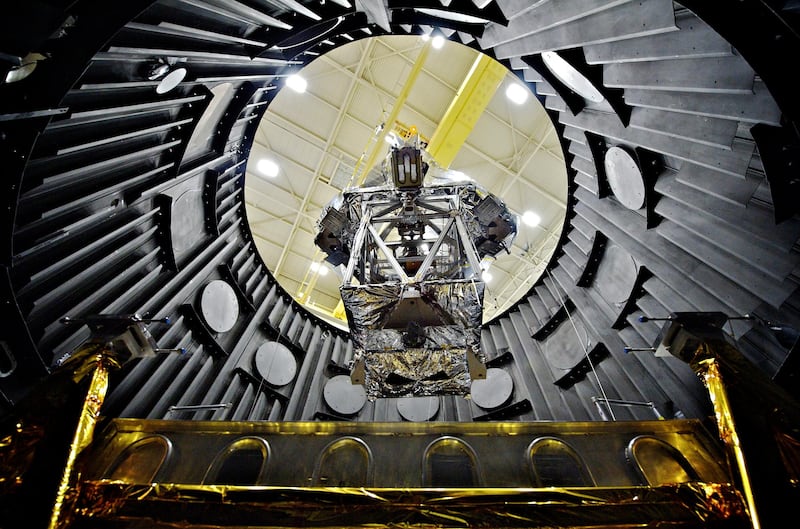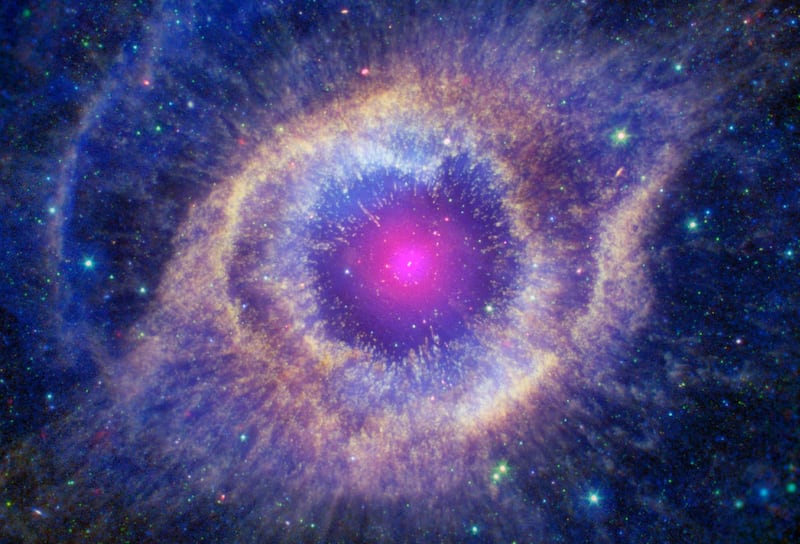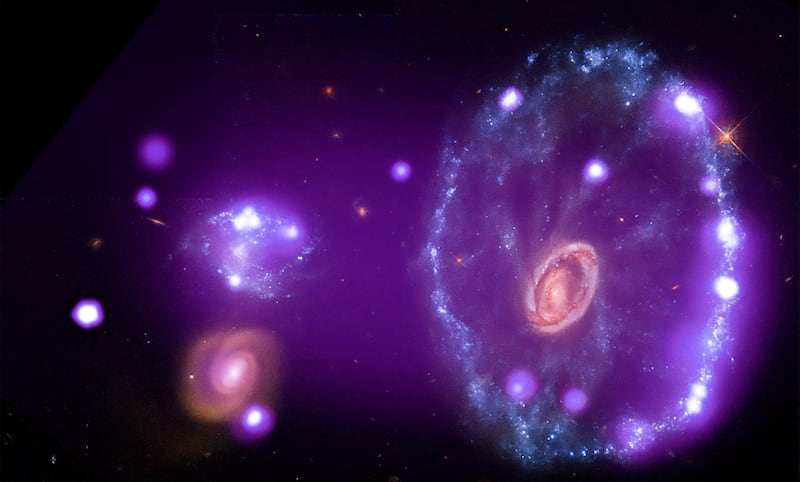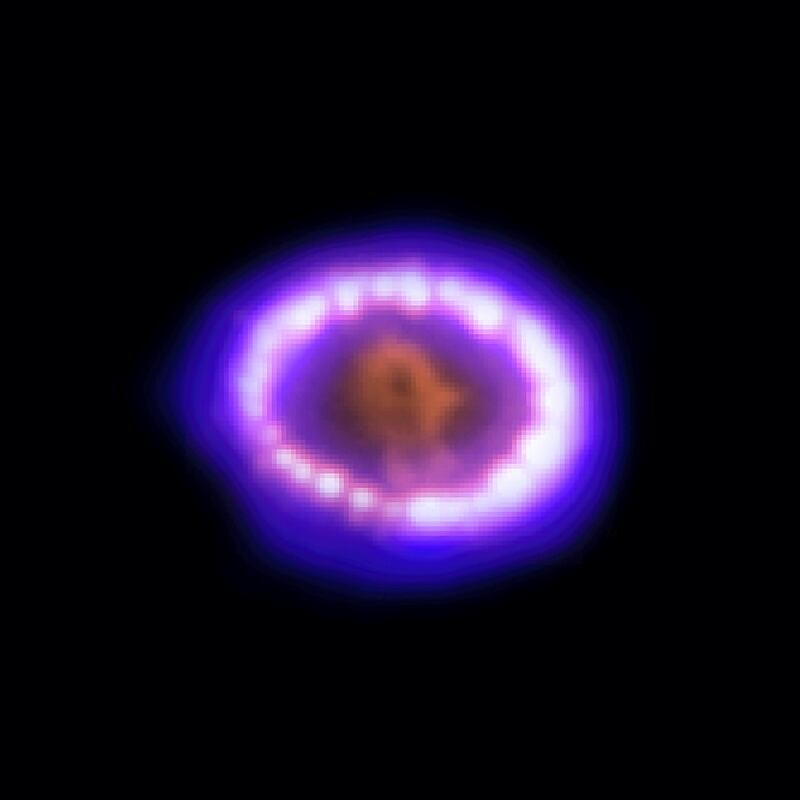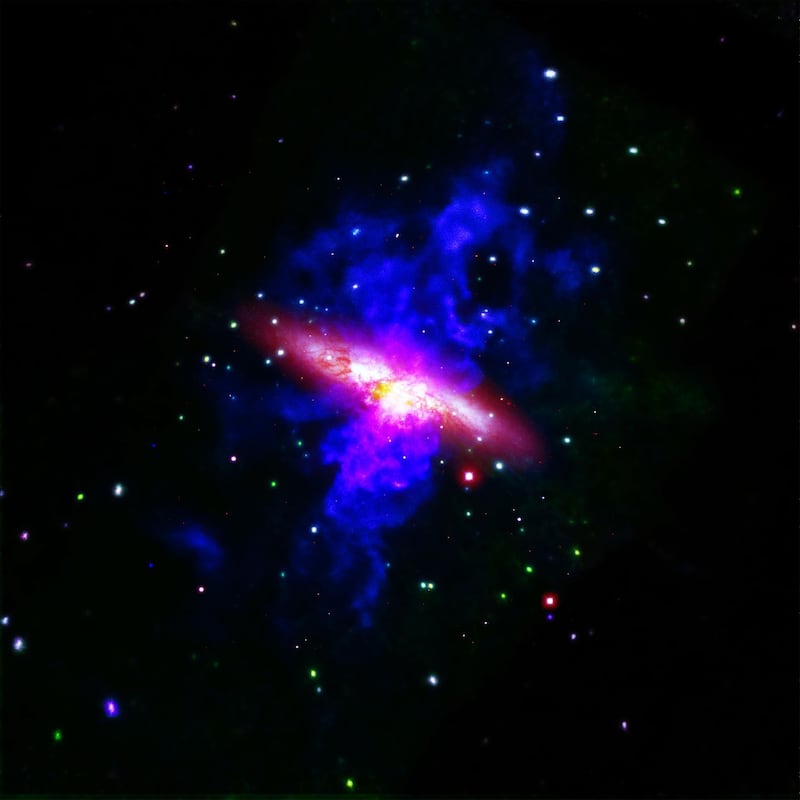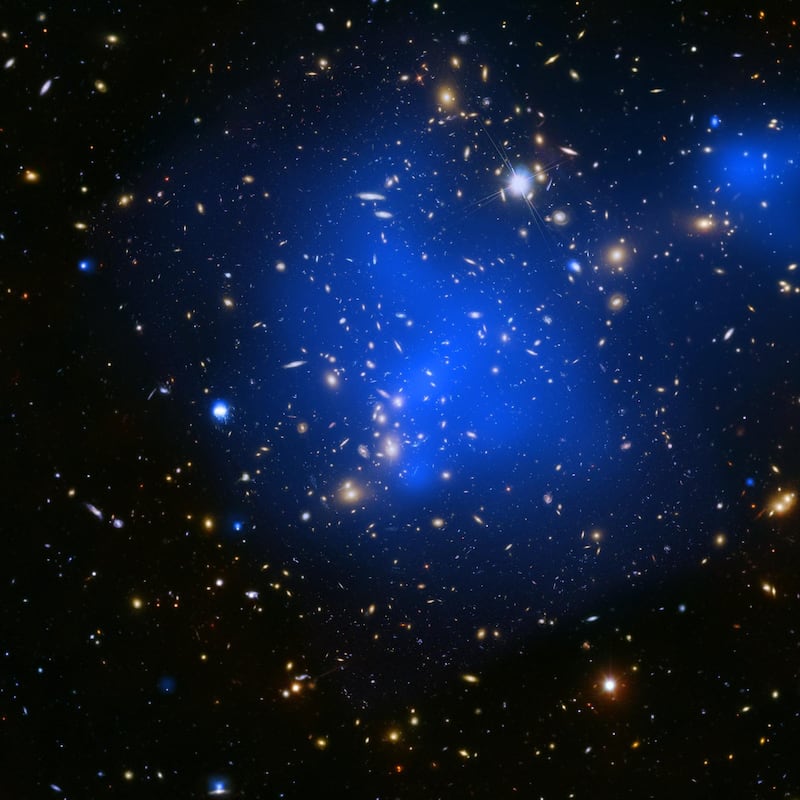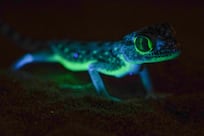A version of this article first appeared on April 7, 2021
An enormous space telescope has given astronomers a peek into the early cosmos, capturing light of galaxies that formed not long after the birth of the universe.
The James Webb Space Telescope (JWST), the world's most advanced space observatory, was in development for nearly two decades and is expected to create an astronomical revolution.
The $10 billion “time machine” will help astronomers to study what the universe looked like millions of years ago.
It is much more advanced than the Hubble Space Telescope because of its breakthrough technology, design and its planned location in space.
Hubble made countless discoveries after it was launched in 1990 and provided millions of images of planets, galaxies, nebulas and stars.
The JWST is equipped with sensitive cameras and spectrographs that can capture light directed into them by its huge golden mirror.
It has been developed by Nasa with its partners, the European Space Agency and the Canadian Space Agency.
The National looks at five facts that make the James Webb Space Telescope extra special.
1. It is ‘time travelling’ into the past
The telescope will show us what the universe was like 100 million to 250 million years after its birth. In the Big Bang theory, it is believed the universe came into existence 13.8 billion years ago.
The first image from the telescope, released on July 12, shows the galaxy cluster SMACS 0723, with light that has been travelling for more than 13 billion years.
Hubble has captured this area before, but observations by James Webb show the galaxy cluster in incredible detail.
Nasa has said it wants to look back even further, about 13.5 billion years in the past to make new discoveries.

The telescope will detect infrared light, allowing it to capture an object’s heat source.
The space observatory’s cameras are so sensitive they could spot the heat signature of a bumblebee.
2. Honeycomb mirrors
A telescope’s mirror helps reflect light into its cameras. The better the mirror, the more the observatory will capture.
JWST has 18 primary hexagonal mirrors that together form a honeycomb shape. In total, it measures 6.5 metres in diameter.
The mirror is six times bigger in area than Hubble’s and is 100 times more powerful.
To help reflect infrared light more efficiently, the mirror is covered with a thin coating of gold.
3. Unique orbit
JWST is placed much further out in space and in a different orbit than Hubble, allowing it to see greater distances.

Instead of an orbit around the Earth, the telescope orbits the Sun. It is in line with Earth, but 1.5 million kilometres from the planet and four times farther away than the Moon. This position in space is called a Lagrange point.
The mirror is kept at a temperature of minus 233°C to shield it from the Sun. It has a five-layer sunshield that is the size of a tennis court and which weakens the heat from the host star by more than a million times.
4. Hunt for life
One of the main objectives of the telescope is to study the atmospheres of exoplanets — planets outside the Solar System.
It will look for oxygen present in the atmospheres of planets in distant galaxies.
5. How it launched into space
The school bus-sized telescope, which measures 21 metres by 14.6 metres, had to fold up to fit into the launch rocket.
JWST launched aboard the Ariane 5 rocket, near French Guiana in South America, on Christmas Day, 2021.
